The Phantom Is A Huge Phenomenon In Papua New Guinea And A Symbol For Tough Fighters.
By Lauren Beldi – 19 Apr 2019
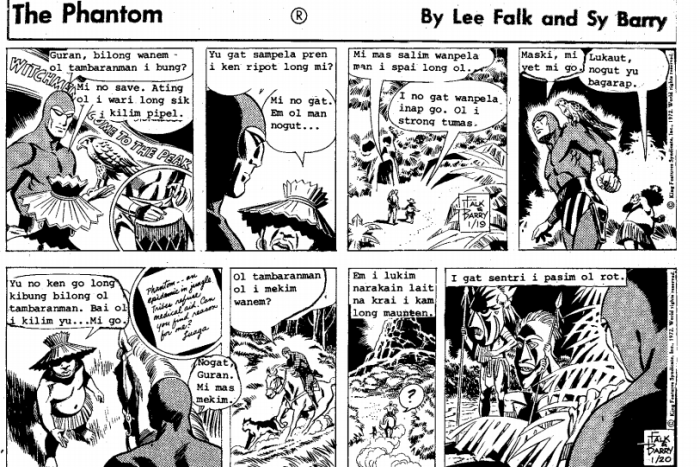
When you think of places a comic book hero might turn up, the tribal war shields of the Papua New Guinea highlands are probably not what springs to mind.
But PNG’s love for the Phantom, also known as “the ghost that walks” or “the man who cannot die”, runs deep.
During a renewed period of tribal fighting in the 1980s, warriors even carried The Phantom into battle. It’s thought the Phantom first came to PNG with US soldiers in World War Two, and he’s never left.
In the 1970s, the comic strips were republished in the country’s newspapers in both English and Tok Pisin, the creole language of PNG. Radio Australia’s Tok Pisin reporter Hilda Wayne remembers looking forward to reading them every day after school when she was growing up in Mount Hagen.
“It was just four strips, every day, from the Post Courier, so Dad would get the paper looking for his news, and I’d be looking forward to the comic strips,” she said.
“Growing up I think we all looked forward to having heroes in society and I used to hear about my grandfather being a warrior back then, so when I saw this phantom it brought me to a different place”.
The Phantom’s story begins hundreds of years ago, when the first of the line of heroes is shipwrecked off the coast of the fictional country of Bangalla. Nursed back to health by the local people, he takes the “oath of the skull”, and is succeeded by a line of sons, each of whom dons the mask and skin-tight purple costume when his father dies.
The Phantom and his family live in a skull cave in the jungle, which may have had particular appeal to those living in the tropical climes of Papua New Guinea.
And there was something else that may have set the Phantom apart — the fact that he made friends with the indigenous people of Bangalla.
“He was interacting with black people back then”, Wayne said.
Two whole Phantom comics, including one with the masked man on the front declaring “I speak Tok Pisin” were reprinted in the language.

Why does The Phantom appear on war shields?
Perhaps the most enduring image of The Phantom’s popularity in PNG is his presence on the traditional war shields of highlands tribes.
Not all of these are decades old either; the late highlands painter Kaipel Ka was putting the Phantom on shields as recently as 2008.
That was when filmmaker Mark Eby, who himself grew up in PNG, made a short film about Mr Ka’s painting. In it, he discussed his Phantom paintings: “[The shields with] The Phantom design were for those who led the battle, because those [who] led the battle were the toughest fighters.”
Mr Eby said that when he spoke to men in the highlands, they explained that traditional decorations on the shields represented the spirits of deceased warrior family members that would protect the current fighters. During the tribal violence of the 1980s and 1990s, some opted for more modern designs.
“Instead of drawing the old patterns which were like butterflies and things like that, quite an abstract design, they went for the comic book characters”, Mr Eby said.
“But the same idea was there, which was basically a protective strong man (like the Phantom) on the shield.”
Kaipel Ka passed away three months after the film was made, but some of the shields he designed live in museum collections around the world.
Examples of war shields originating from Papua New Guinea depicting the Phantom can be seen below.

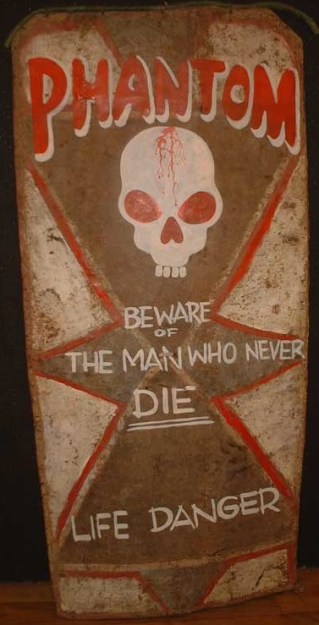
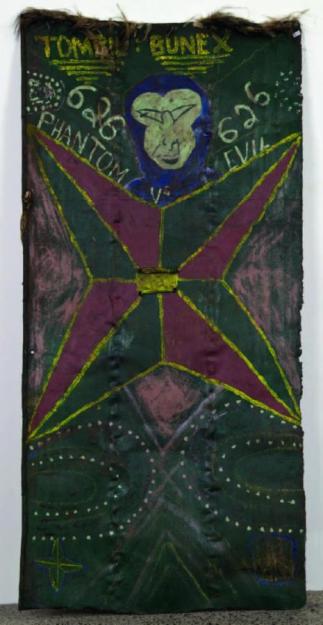
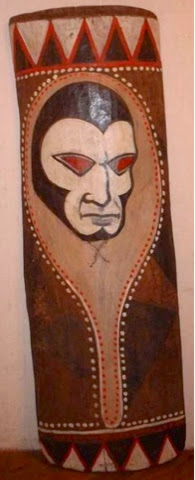
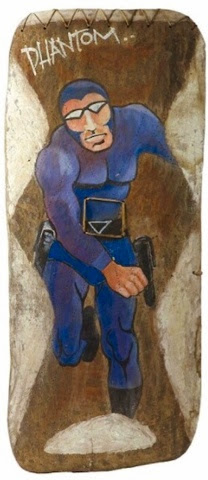

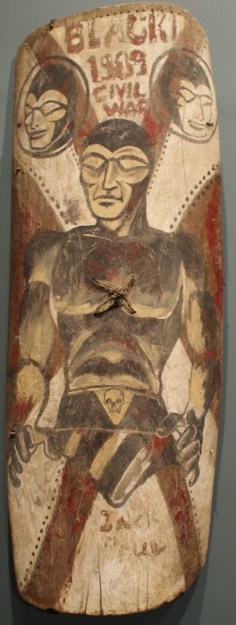

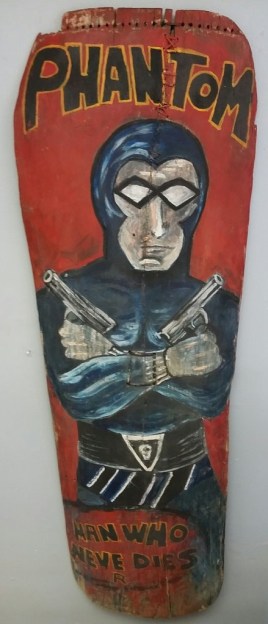

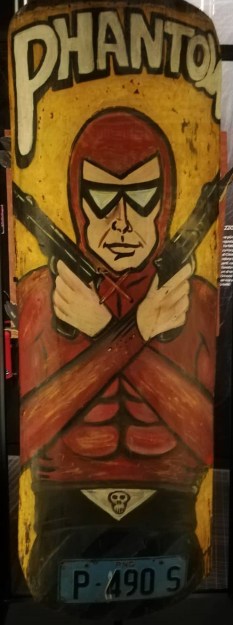



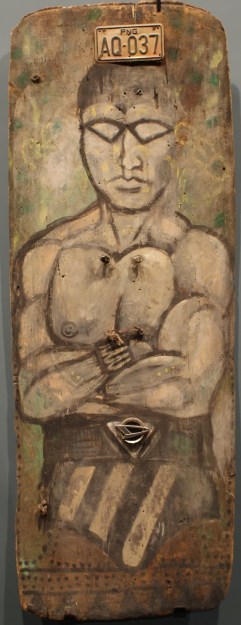
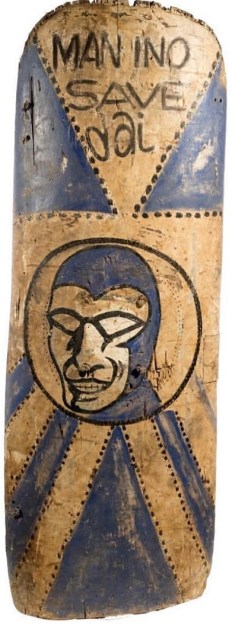

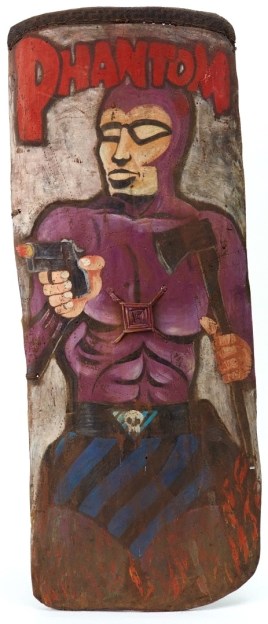
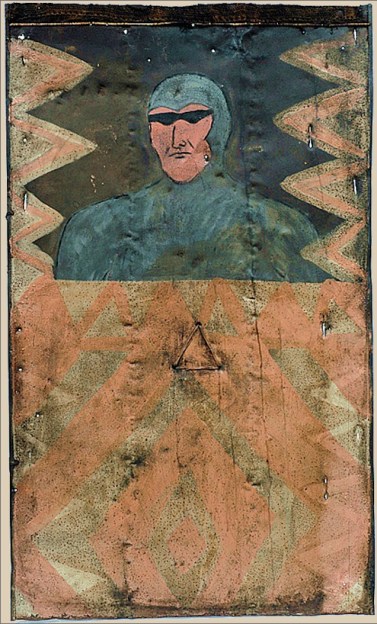

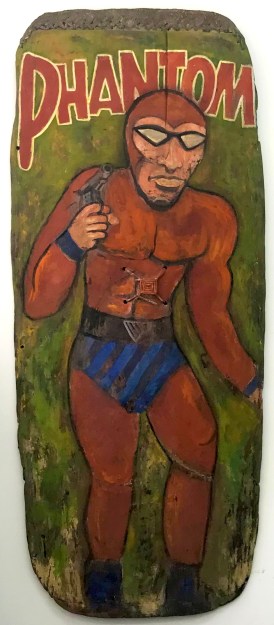
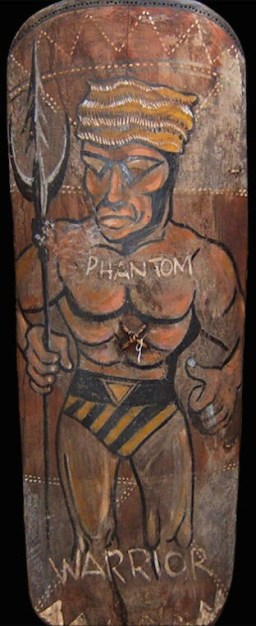


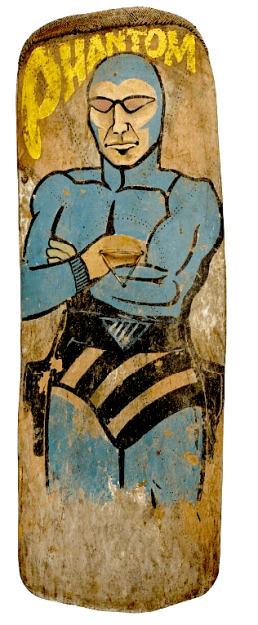
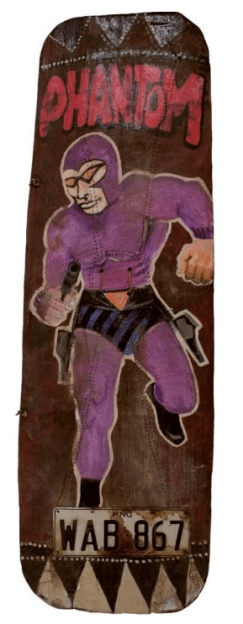

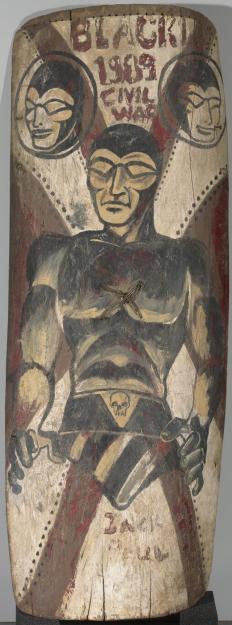



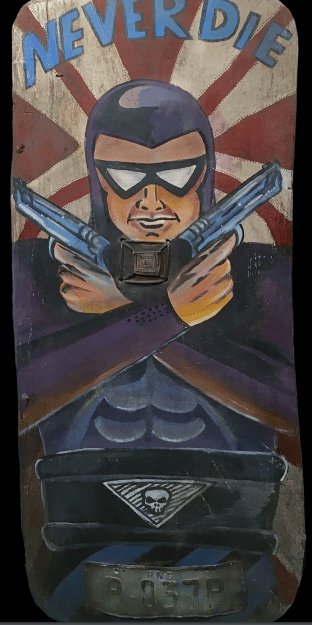
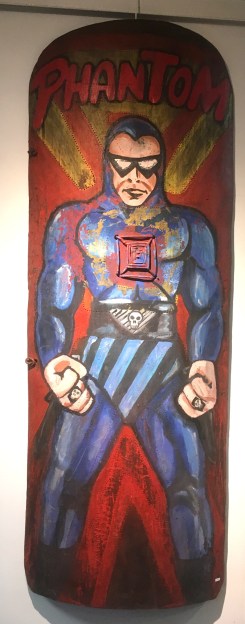

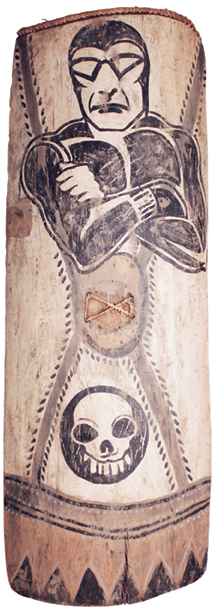

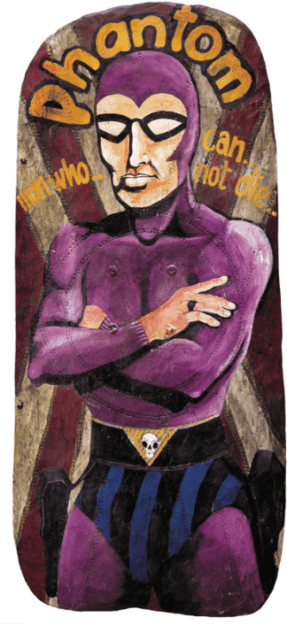
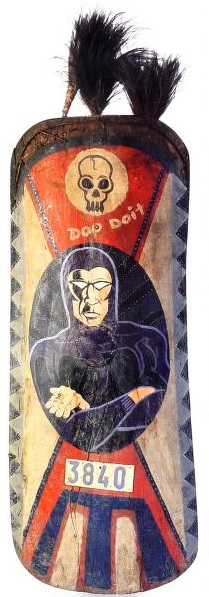
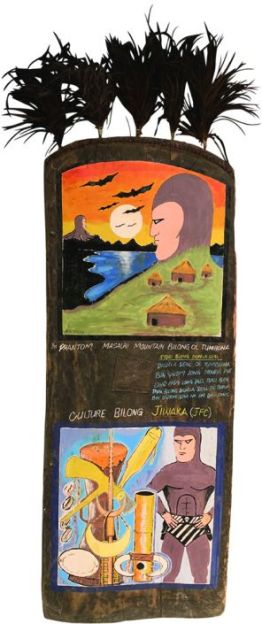
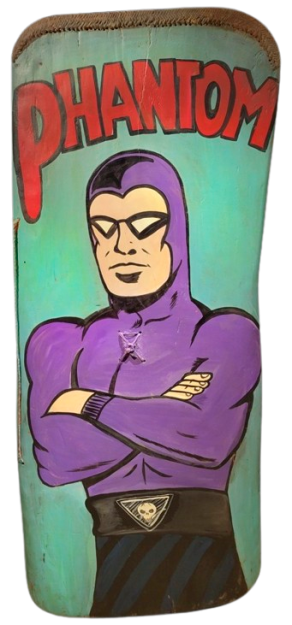
Chimbu Provence Peanut Campaign

In August 1976, the Papua New Guinea Department of Health launched a campaign to educate the public in Chimbu Provence on the importance of eating peanuts as a source of protein instead of starch.
1000 full color Phantom posters (measuring 508.0mm x 762.0mm) were distributed in the following month of September in Chimbu Provence.
The Phantom is seen as saying “Sapos yu kaikai planti pinat, bai yu kamap strong olsem Phantom”, which translates to, ‘If you eat more peanuts you will be strong like The Phantom’.
The campaign was also heavily promoted and advertised in the PNG Post-Courier newspaper.
Additional Information
Phantom comics published by Wantok in Papua New Guinea in 1978.
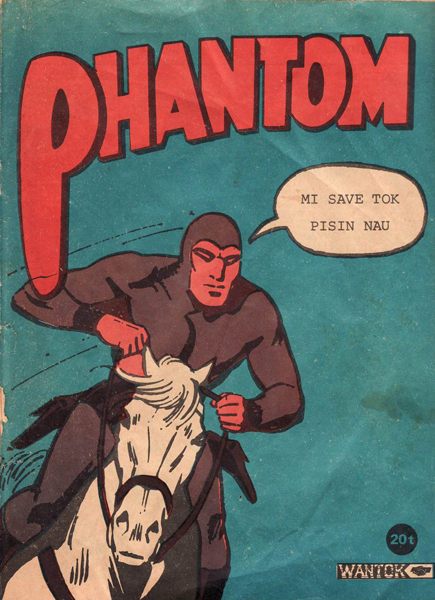
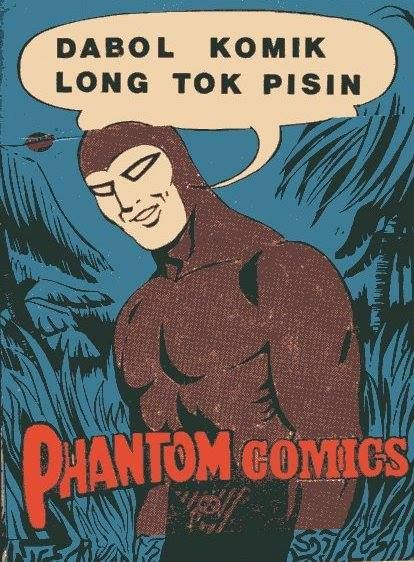
Wantok Newspaper published on the 19th of September 1973 in Tok Pisini Language.

The Man Who Cannot Die – Documentary
Information video by Galerie Flak (presented by Julien Flak, video credit: http://www.galerieflak.com).
Aerial view of the Wahgi Valley, New Guinea Highlands, Papua New Guinea taken by Chris Boylan.

